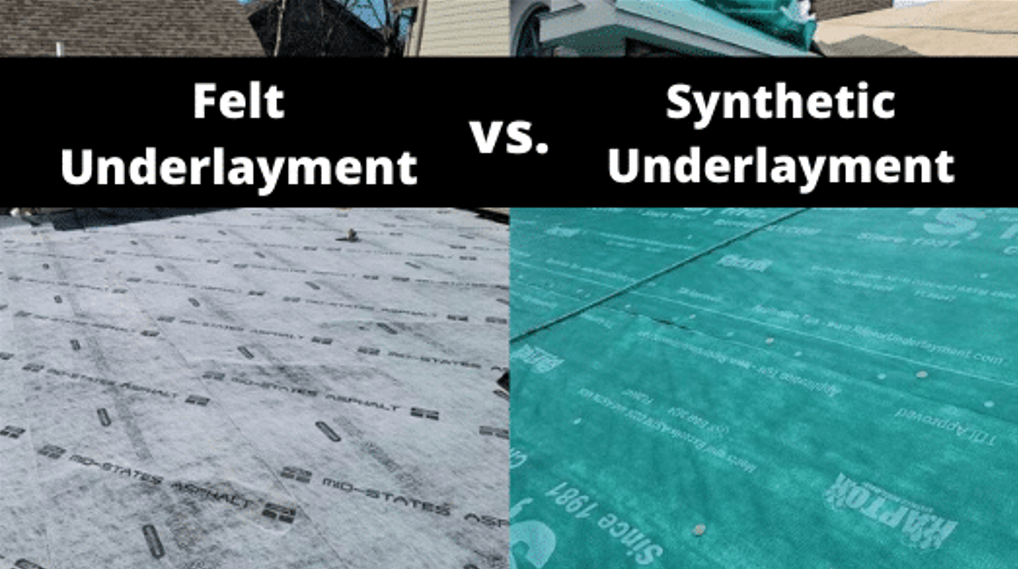
Which roof underlayment to pick? You’re not alone. I was in your shoes last year when replacing my roof with help from dependable roofers in Jacksonville. The choice between felt and synthetic underlayment isn’t just about cost – it affects how well your roof holds up over time. I’ve done the research and talked with pros to break down what you need to know before making this crucial decision for your home.
Traditional felt underlayment has protected homes for decades. Made from natural materials like cellulose fibers soaked in bitumen, felt comes in different weights – usually 15# or 30# (the heavier, the better). It’s affordable and gets the job done, but be aware that it’s not fully waterproof.
My neighbor used felt on his garage roof and says proper installation is key – those overlaps need to be correct, or you’ll risk leaks during heavy rain. Felt works well in mild climates, but it can get brittle in extreme heat and crack in freezing conditions. Still, many roofers stick with felt because they know how it performs and it’s easier on the wallet.
Synthetic underlayment is the newer kid on the block. Made from polypropylene or polyester, it’s what I ultimately chose for my own roof replacement. The material is super lightweight – my roofers appreciated not having to lug heavy rolls up ladders – yet surprisingly tough. It doesn’t tear easily during installation, which means fewer patches and potential weak spots.
What sold me was how it handled a sudden downpour midway through our installation. The synthetic material shed water completely while exposed, giving us peace of mind during the three-day installation process. It costs more upfront, but the added protection made sense for my home.
Living in Florida means my roof takes a beating from sun, rain, and occasional hurricanes. Synthetic underlayment outperforms felt in these conditions. My roofer showed me how synthetic material won’t dry out and crack like felt can after years of UV exposure. It also resists mold growth – a big plus in humid climates.
When my sister had her roof done with felt in Chicago, it started deteriorating within five years in the freeze-thaw cycles. Meanwhile, synthetic underlayment typically maintains its water-shedding abilities for 20+ years. This durability difference isn’t just convenient for homes in extreme weather zones – it could save you from costly water damage down the road.
Let’s talk money and time. Felt typically costs $0.05-$0.15 per square foot, while synthetic runs $0.15-$0.30. For my 2,000-square-foot roof, that difference added about $300 to the project. But here’s what my contractor pointed out: synthetic goes down faster because it’s lighter, covers more area per roll, and requires fewer fasteners.
This saved about half a day of labor on my installation – nearly offsetting the extra material cost. Synthetic also lays flatter without wrinkling, creating a smoother surface for shingles. One thing to consider: some older roofers aren’t as familiar with synthetic, so ensure your contractor has experience with whichever material you choose.
I care about my environmental footprint, which complicated my decision. Felt underlayment uses natural materials and eventually biodegrades, which sounds great. However, its shorter lifespan means more frequent replacement and waste. The manufacturing process also involves petroleum products and creates significant emissions. Synthetic underlayment lasts longer, reducing replacement frequency, but it’s essentially plastic that won’t break down naturally.
Some newer synthetic options use recycled materials and can themselves be recycled, though finding facilities that accept them isn’t always easy. My roofer suggested I consider how long I plan to stay in my home – more extended stays might justify synthetic’s durability despite its plastic composition.
If you’re still weighing your options, consider your specific situation. How’s your local weather? What’s your budget? How long do you plan to live in your home? For my money, synthetic made sense for long-term protection against Florida’s harsh conditions.
Ready for your roofing project? Reach out to experienced roofers in your area for a personalized assessment. They’ll help you choose the right underlayment for your home, climate, and budget – ensuring your roof stands strong for years.
Share :
Jacksonville
4600 Touchton Rd Building 100, Suite 150, Jacksonville, FL 32246, United States
Orlando
37 N Orange Ave #500, Orlando, FL 32801, United States
Tampa
5401 W Kennedy Blvd., Ste 100, Tampa, FL 33609
Venice
1101 Tamiami Trail S, Ste 100T, Venice, FL 34285
Monday – Friday: 9:00 AM – 5:00 PM
Saturday – Sunday: Closed
Subscribe to our newsletter for the latest updates and offers.